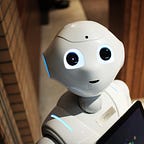Elements of Computer Integrated Manufacturing
What is Computer Integrated Manufacturing ?
Computer-integrated manufacturing (CIM) is the use of computer-controlled machines and automation systems in the manufacture of goods. CIM uses technology such as computer-aided design (CAD) and computer-aided manufacturing (CAM) to create an error-free production process that eliminates manual labor and automates repetitive operations. The CIM technique accelerates the manufacturing process and automates it through the use of real-time sensors and closed-loop control procedures. It’s widely utilized in the automotive, aerospace, and shipbuilding sectors.
Major elements of a CIM system:
There are 9 major elements of Computer Integrated Manufacturing system and they are explained in brief below:
1. Marketing
The marketing division determines the necessity for a product. The marketing department is also in charge of deciding on product specifications, production quantity projections, and marketing strategy. Marketing also calculates production expenses to determine the product’s economic feasibility.
2. Product Design
The company’s design section creates the basic database for the creation of a proposed product. In a CIM system, this is performed by activities like as geometric modeling and computer assisted design, while taking into account the product needs and concepts provided by the design engineer’s creativity. Many designs rely heavily on configuration management. Complex designs are typically carried out by many teams working concurrently, frequently in various regions of the world. The design process is limited by the expenses of real manufacturing as well as the capabilities of the current production equipment and procedures. The database necessary to build the item is created throughout the design process.
3. Planning
The planning department uses the design department’s database and supplements it with production data and information to create a production plan for the product. Planning entails a number of subsystems that deal with materials, facilities, processes, tools, people, capacity, scheduling, outsourcing, assembly, inspection, logistics, and so on. In order to develop an optimum plan, this planning process in a CIM system should be restricted by production costs, as well as production equipment and process capabilities.
4. Purchase
The purchase department is in charge of placing purchase orders and following up on them, ensuring quality in the vendor’s production process, receiving the items, arranging for inspection, and supplying the items to the stores or arranging timely delivery based on the production schedule for eventual supply to manufacture and assembly.
5. Manufacture
Manufacturing Engineering is the activity of carrying out the product’s production, which includes further enriching the database with performance data and information about the production equipment and processes. This necessitates activities such as CNC programming, simulation, and computer-aided production scheduling in CIM. This should include online dynamic scheduling and control based on the real-time performance of the equipment and processes to ensure continuous production activity. Frequently, the need to meet fluctuating market demand necessitates a flexible and agile manufacturing system.
6. Automated Work Station
Factory automation equipment adds to the database by storing equipment and process data in either the operator or the equipment used to carry out the manufacturing process. This includes computer controlled process machinery such as CNC machine tools, flexible manufacturing systems (FMS), computer controlled robots, material handling systems, computer controlled assembly systems, flexibly automated inspection systems, and so on.
7. Warehousing
Warehousing is the function of storing and retrieving raw materials, components, completed goods, and commodities for transportation. Logistics and supply chain management are critical in today’s complicated outsourcing landscape and the demand for just-in-time delivery of components and subsystems.
8. Finance
Finance is concerned with financial resources. Finance departments’ primary responsibilities include investment planning, working capital and cash flow control, receipt realization, accounting, and fund allocation.
9. Information Management
One of the most important jobs in CIM is probably information management. Master production scheduling, database administration, communication, manufacturing system integration, and management information systems are all part of this.
— — — — — — — — — — — — — — — — — — — — — — — — — — — — — — — — — — — — — —
Sources
https://blogmech.com/computerized-elements-of-cim-system-cim-and-automation/
https://link.springer.com/chapter/10.1007/978-3-642-97314-7_3
https://blogmech.com/computerized-elements-of-cim-system-cim-and-automation/
